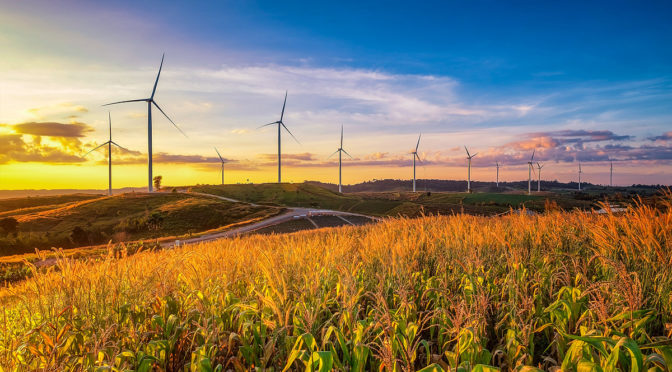Poland’s wind energy sector has been experiencing a significant surge in recent years, with the country harnessing the power of the wind to meet its growing energy demands and reduce its reliance on fossil fuels. This transition to renewable energy sources is not only helping Poland achieve its climate goals but also boosting its economy and creating new job opportunities.
One of the main drivers behind the growth of Poland’s wind energy sector is the country’s commitment to the European Union’s renewable energy targets. As a member of the EU, Poland is required to generate at least 15% of its energy from renewable sources by 2020 and at least 23% by 2030. To meet these targets, the Polish government has been actively promoting the development of wind energy projects, offering various incentives and support mechanisms to attract both domestic and foreign investors.
Moreover, Poland’s geographical location and topography make it an ideal place for wind energy generation. The country has vast areas of flat land, particularly in the northern and central regions, which are suitable for the installation of onshore wind turbines. Additionally, Poland has a long coastline along the Baltic Sea, offering excellent potential for the development of offshore wind farms. According to the Polish Wind Energy Association, the country’s total wind energy capacity could reach up to 40 gigawatts (GW) by 2040, with 10 GW coming from offshore wind projects.
The Polish government has also recognized the importance of research and development in the wind energy sector. In recent years, several research institutions and universities have been collaborating with industry partners to develop innovative solutions for wind energy generation, storage, and distribution. These efforts have resulted in the creation of cutting-edge technologies, such as advanced wind turbine designs and smart grid systems, which are helping to improve the efficiency and reliability of Poland’s wind energy infrastructure.
Another factor contributing to the growth of Poland’s wind energy sector is the increasing competitiveness of wind power in the global energy market. The cost of wind energy has been steadily decreasing over the past decade, thanks to technological advancements and economies of scale. As a result, wind power is now one of the most affordable sources of electricity, making it an attractive option for both public and private investors.
Furthermore, the development of Poland’s wind energy sector has been creating numerous job opportunities, particularly in rural areas where many wind farms are located. According to a study by the European Commission, the renewable energy sector in Poland could generate up to 100,000 new jobs by 2030, with a significant portion of these jobs coming from the wind energy industry. This employment growth is expected to have a positive impact on the country’s overall economic development and social cohesion.
Despite the promising outlook for Poland’s wind energy sector, there are still several challenges that need to be addressed in order to fully harness the power of the wind. One of the main obstacles is the lack of a stable and predictable regulatory framework, which has been causing uncertainty among investors and developers. The Polish government has been working on a new Renewable Energy Act, which aims to provide a more transparent and supportive environment for the development of wind energy projects. However, the finalization and implementation of this legislation have been delayed several times, raising concerns among industry stakeholders.
Another challenge is the need for significant investments in Poland’s energy infrastructure, particularly in the areas of grid expansion and modernization. The rapid growth of wind energy capacity has been putting pressure on the country’s aging power grid, leading to occasional bottlenecks and curtailments. To address this issue, the Polish government has been allocating funds for grid upgrades and has been collaborating with neighboring countries to improve cross-border interconnections.
In conclusion, Poland’s wind energy sector has been making impressive strides in recent years, driven by a combination of favorable geographical conditions, supportive government policies, and technological advancements. By overcoming the remaining challenges and fully harnessing the power of the wind, Poland can become a leading player in the global renewable energy market and contribute significantly to the global fight against climate change.


